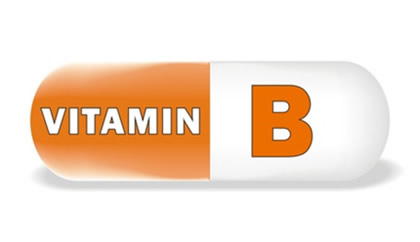Niacinamide is a form of niacin, also known as vitamin B3. When vitamin B3, combines with amino acids of another molecule, the chemical reaction produces niacinamide, also called as nicotinamide. Whole B vitamins help the body to convert food into fuel, which is used to produce energy. Also, B vitamins are needed for healthy hair, skin, liver and eyes. Because niacin is very important for cellular processes throughout body, insufficiency leads to widespread symptoms involving skin, mucous membranes, nervous system and gastrointestinal system. B complex vitamins are water-soluble, and excess vitamins are excreted in the urine.
Effects
Niacinamide is necessary for hundreds of enzymatic reactions. Your body needs niacinamide to form healthy cells and assist in metabolizing protein and fats. Niacinamide is considered to have positive effects on a large array of other medical problems, including the cataracts, heart disease, second heart attack, both type 1 and type 2 diabetes, osteoarthritis.
Niacinamide Dosage
 The USDA recommended daily allowance of niacinamide or niacin is 13-18 mg/day for a normal, healthy adult. Men 19 years and older; 16 mg (RDA), Women 19 years and older; 14 mg (RDA), Pregnant women; 18 mg (RDA), Breastfeeding women; 17 mg (RDA). For vitamin B3 deficiency, niacinamide or niacin 50-100 mg per day is used. For pellagra in children, niacinamide or niacin 100-300 mg daily is given in divided doses. For pellagra in adults, niacinamide or niacin 300-500 mg daily is given in divided doses.
The USDA recommended daily allowance of niacinamide or niacin is 13-18 mg/day for a normal, healthy adult. Men 19 years and older; 16 mg (RDA), Women 19 years and older; 14 mg (RDA), Pregnant women; 18 mg (RDA), Breastfeeding women; 17 mg (RDA). For vitamin B3 deficiency, niacinamide or niacin 50-100 mg per day is used. For pellagra in children, niacinamide or niacin 100-300 mg daily is given in divided doses. For pellagra in adults, niacinamide or niacin 300-500 mg daily is given in divided doses.
Niacinamide Food Sources
Food sources of niacin include animal proteins, beef liver, green vegetables, brewer’s yeast, mushrooms, roasted peanuts, tuna, haddock, swordfish, salmon, whole wheat and enriched flours.
Side Effects
Some serious side effects of Niacinamide are stomach upset, nausea, dizziness,, muscle weakness, vision changes, darker-colored urine, bloody or black stools, tingling or numbness of the skin, appetite loss, a decrease in insulin sensitivity, irregular heartbeat, yellowing of the eyes or of the skin, and liver toxicity. When taken with blood pressure drugs, niacinamide can cause risky low blood pressure. Checking with your physician before using niacinamide if you suffer from liver problem, diabetes, ulcers, gout, glaucoma or low blood pressure or are taking statins or fibrates.
 Glutathione is a molecule that helps remove free radicals from your body. Is a important factor in detoxification and antioxidant mechanisms of your body. It directly quenches reactive hydroxyl free radicals, other oxygen-centered free radicals, and radical centers on DNA and other biomolecules.
Glutathione is a molecule that helps remove free radicals from your body. Is a important factor in detoxification and antioxidant mechanisms of your body. It directly quenches reactive hydroxyl free radicals, other oxygen-centered free radicals, and radical centers on DNA and other biomolecules.